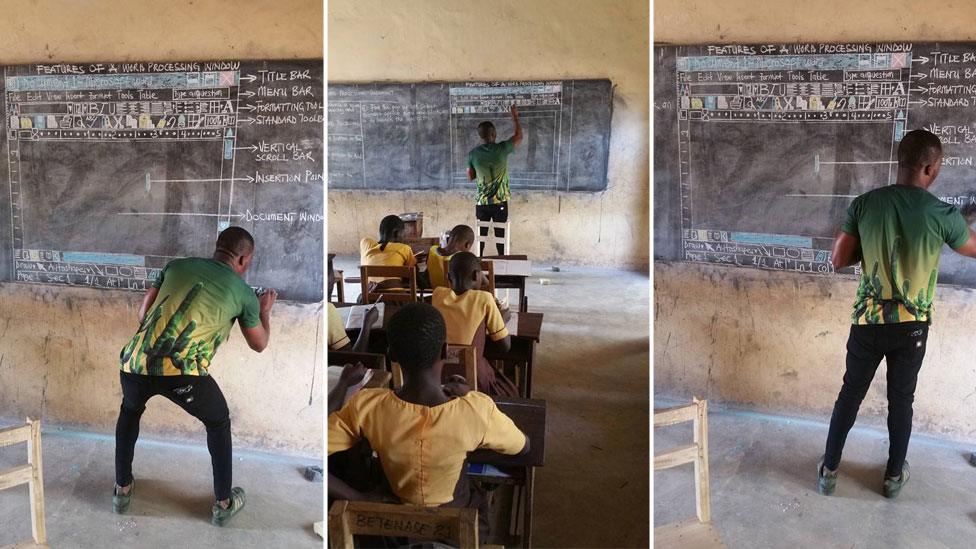Ghana man teaching computing without computers becomes viral hit
- Published

Students are expected to pass a technology exam - even if they have no access to computers
A teacher in Ghana who educates his students on computer technology - without any computers - has become a hit online.
The man from Kumasi used his blackboard to meticulously draw a diagram of the popular Microsoft Word program.
"Teaching of ICT in Ghana's school is very funny," he said in a Facebook post alongside the photos.
After the images were shared thousands of times online, Microsoft promised to send him new computer equipment.
In his Facebook message, Owura Kwadwo - a nickname for the man Quartz Africa identified as Richard Appiah Akoto, external - wrote: "I love my students so have to do what will make them understand what [I] am teaching."
Quartz said Mr Akoto's school had not had any computers since 2011, despite the requirement for teenagers to pass an information and communications technology (ICT) exam as part of their progression to high school.
Allow X content?
This article contains content provided by X. We ask for your permission before anything is loaded, as they may be using cookies and other technologies. You may want to read X’s cookie policy, external and privacy policy, external before accepting. To view this content choose ‘accept and continue’.
Many expressed admiration for his dedication when his mid-February post spread on social media.
"This is not my first time [of drawing] it. I have been doing it anytime I am in the classroom," Mr Akoto told Quartz.
"I like posting pictures on Facebook so I just felt like [sharing it]. I didn't know it would get the attention of people like that," he said.

You may also be interested in:

On Sunday, entrepreneur Rebecca Enonchong tweeted to Microsoft Africa, highlighting that he was teaching the use of their product without actually having access to it.
"Surely you can get him some proper resources," she suggested.
On Tuesday, the software giant pledged to send Mr Akoto a computer and give him access to its education material.
Allow X content?
This article contains content provided by X. We ask for your permission before anything is loaded, as they may be using cookies and other technologies. You may want to read X’s cookie policy, external and privacy policy, external before accepting. To view this content choose ‘accept and continue’.
- Published27 March 2015

- Published3 January 2018
